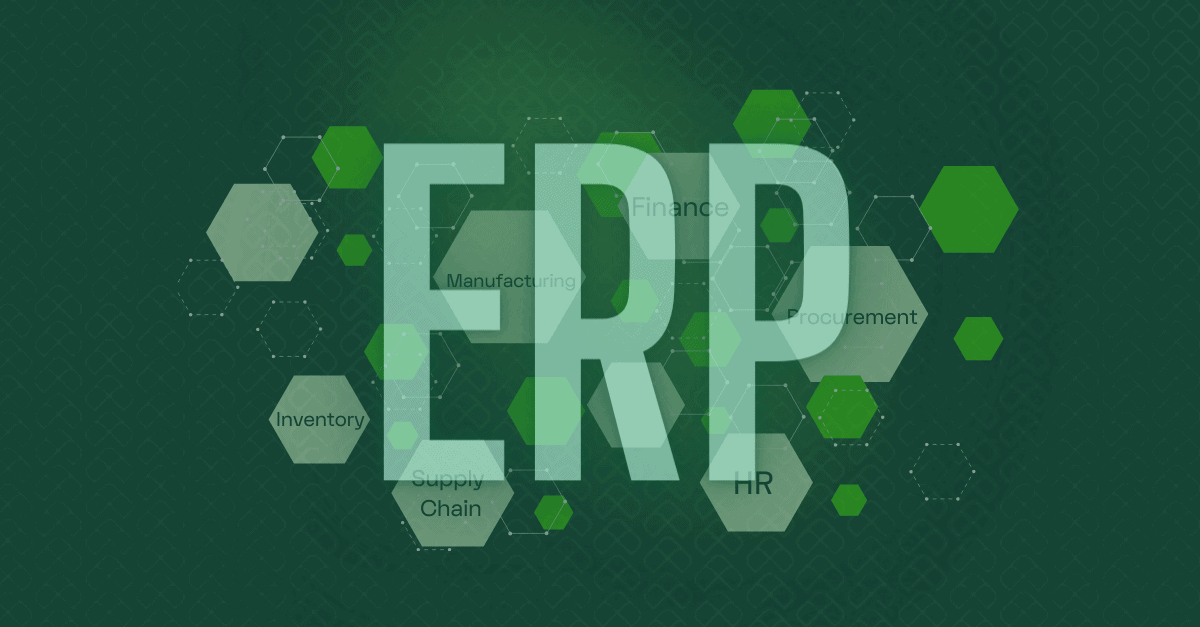Companies in nearly every sector are rethinking their business models and implementing new pricing strategies to meet consumer demands. So much so that even the U.S. Chamber of Commerce admits that companies relying on traditional revenue prediction models just a few years ago must now utilize technology-based consumption models to remain competitive.
Flexible consumption is a prime example of a compelling new business model organizations use to attract customers and bolster their profits. Everything as a Service (XaaS), as flexible consumption business models are also known, empowers customers to choose billing options that closely align with their actual usage.
These models are fundamental in the technology industry as 63% of Software as a Service (SaaS) customers crave increased flexibility after investing in a new solution. To that end, let’s unpack XaaS models, consider their importance within technology companies, and explore how to implement flexible payment solutions for your customers.
Understanding Flexible Consumption
Flexible consumption encompasses a variety of pricing models that provide a high degree of value and freedom to the customer. Instead of locking users into a rigid pricing plan, they generally allow customers to choose how they want to pay for services, scale at will, and lower their consumption to suit their needs.
There’s no one set way to structure an XaaS pricing plan. Generally, however, they’re a kind of usage-based pricing model that mixes elements such as:
- Pay-as-you-go pricing, which allows customers to pay for SaaS access on a need-to-use basis
- Tiered packages
- Short or no fixed-term contracts
- Volume discounts
- Pay-per-use models that allow companies to pay for the exact amount of services they utilize
Additionally, flexible consumption models can be adapted to fit your service offerings so long as they enable choice and optimize the value you provide.
Traditional vs. Flexible Consumption Models
Compared to traditional pricing models, flexible approaches base their pricing structure on customers’ needs rather than the life cycles of products. This means not locking users into extended deals with strict software licenses and multi-year contracts.
Take subscription-based models, for instance, that charge customers access fees to a SaaS solution for a set period of time. They often feature:
- Upfront costs
- Extra fees for upgrading access or using more bandwidth
- Lengthy commitments
Alternatively, flexible models allow users to realize the value a product creates for their company before paying for it. They also encourage scaling by not locking customers into certain access tiers and then penalizing them with fees for leveling up—as some subscription models do.
Seat-based pricing is another traditional model that flexible consumption can enhance and replace. In regular seat-based models, companies pay for access based on the exact number of users they need. Such structures, however, can limit wider adoption as the price to scale is often higher than that of flexible consumption.
Benefits of Adopting a Flexible Consumption Model
Flexible consumption models offer myriad benefits to businesses as well as their customers. If you’re considering implementing a flexible model for your pricing structure, you can look forward to:
- Increased customer satisfaction: Flexible consumption enables choice, and, as mentioned, most SaaS users want more flexibility in their products. When users are free to choose payment metrics, volumes, and other pricing factors, they’re typically more likely to feel satisfied than if the choice is made for them.
- High market adaptability: Over 90% of large organizations already use multiple SaaS solutions to complete singular organizational operations. Flexible consumption acknowledges such market trends and helps products remain relevant by allowing users to adopt them to the extent they need.
Likewise, if you choose a flexible model for your pricing structure, your customers will benefit from:
- A personalized service experience: Flexible consumption lets customers customize their payment plans to match their needs. Such personalization factors are essential to contemporary SaaS sales, and 88% of marketers say personalization is their top priority in delivering a better customer experience.
- The ability to pay for value: When customers aren’t locked into long contracts or paying for services they don’t use, it’s easy for them to see the true value a solution creates for their company. They can then use this data to assess how a tool fits into their operations and, if desired, scale it to meet their needs.
Implementing a Flexible Consumption Model in Your Business
If you’re interested in the benefits of XaaS and, like 85% of other companies, want to use new pricing structures to drive value for your business, it’s time to implement a flexible billing structure.
To do so, first consider:
- Your technological infrastructure: For cloud-based services, you must have a reliable billing metric and means of tracking usage to accurately charge customers. Likewise, you’ll need tools to address customers’ objections and support their success after they invest in your solution.
- Your pricing strategy: Flexible consumption is, well, flexible. You can bill your customers using various metrics and, ideally, offer them choices between plans and structures that more closely suit their needs.
- Customer engagement: When your customers can see the real value your solutions create, they’re more likely to invest in them and your company as a whole. Foster this engagement to maintain positive client relationships and keep renewals rolling in.
You should also keep in mind the potential challenges of flexible consumption models. Unpredictable usage patterns are one such issue, as customers can scale and roll back their utilization whenever necessary. To combat this, you can offer discounts for higher usage volumes, enticing customers to apply your solution more broadly across their organizations.
No fixed contracts can also present uncertainty about future success. To mitigate the risk of clients leaving, emphasize the importance of pricing transparency to your internal sales teams and service and retention to your customer success representatives.
Success Stories: Companies Excelling with Flexible Consumption
More than half a decade ago, longtime tech industry stalwart Dell rolled out a flexible consumption model for some of its digital services. From on-demand cloud computing and storage capacity to off-the-shelf digital solutions, Dell allows customers to choose what and how much of its products they need to operate.
With various products and payment structures available across different regions, Dell emphasizes personalization in their flexible billing structure by having customers work directly with a representative to establish their custom payment model. The effort has inarguably paid off—since they began flexible consumption, their stock value has increased tenfold.
Cisco has likewise enabled flexible consumption by unpackaging its digital tools and allowing companies to purchase access a la carte. This move significantly lowered startup costs for curious businesses—drumming up interest in Cisco’s products and allowing customers to add tools and capacity as they see fit.
The Role of Technology in Enabling Flexible Consumption
A variety of modern technological solutions are necessary to power flexible consumption models. To implement a flexible pricing structure, you’ll need:
- Usage trackers: To bill clients, you’ll need one or more reliable usage metrics, a trustworthy means of measuring them, and a way for customers to monitor their ongoing usage volumes.
- Billing and rating systems: Billing and rating systems measure users’ billing metrics against their volume and issue invoices accordingly.
- Analytics platforms: Like any marketing strategy or campaign, you’ll want to measure flexible consumption’s efficacy to see if the effort is worth it. Thus, effective analytical platforms must be utilized to provide insight into Key Performance Indicators (KPIs), such as usage trends, revenue, and customer retention.
- Revenue recognition software: Flexible consumption and other complex pricing models make it difficult to determine when and how to recognize revenue. A robust revenue recognition solution can automate this process and reduce tedious accounting work.
RightRev makes adopting flexible consumption seamless for your accounting professionals. With myriad customizable rules, recognizing revenue to the right accounting period is quick and simple. Learn more about what use case consumption models support and partner with us to fully embrace the power of flexible billing.
Future Trends in Flexible Consumption
As flexible consumption gains popularity, it will likely experience widespread adoption across various key industries. Cloud computing, for instance, goes hand in hand with flexible consumption, as over 40% of companies are already making efforts to limit their cloud services to the exact level they need to operate.
Flexible consumption will also enable business leaders to offer their customers risk-free tastes of new digital services as they arise. This will likely mitigate roadblocks to adoption and ensure early customers are more than just channel partners and legacy contracts.
From data storage to digital tools, flexible consumption presents an effective billing solution across many different sectors. As XaaS grows and evolves, flexibility may take on different meanings based on billing structures, metrics, and more. But in the end, all changes should enable customers to flexibly adopt digital services and solutions.
Power Revenue Recognition for Your Flexible Consumption Model With RightRev
In a flexible model, the revenue timing may not actually follow the billing schedule, leading to complicated reporting requirements and potential headaches for anyone balancing your books.
RightRev automatically determines when revenue should be recognized and attributes it to the correct accounting period according to your pre-set revenue policies—making revenue accounting a breeze.
If you’re exploring the transition from subscription to a flexible consumption model, you can trust RightRev to simplify your revenue recognition process.




